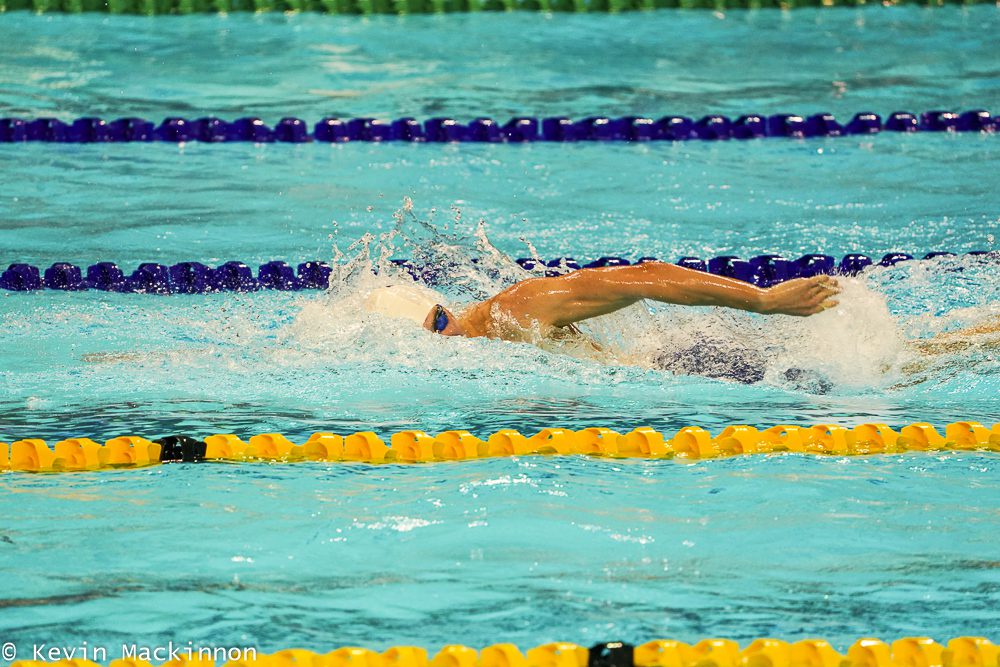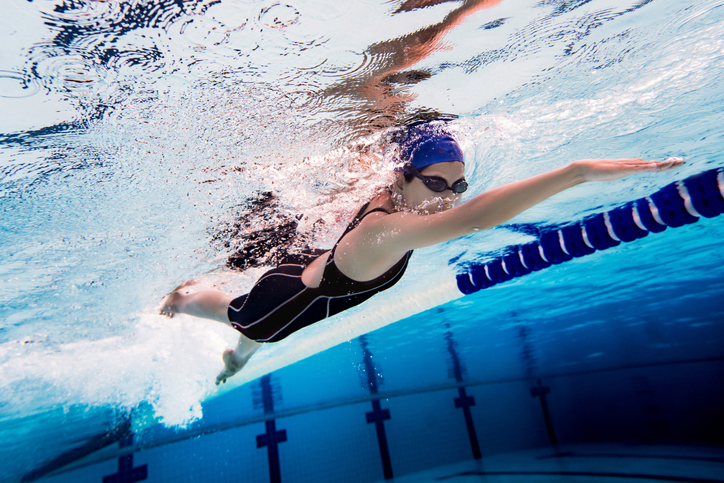Test your way to a swim PB next season
Setting benchmarks is a critical way to monitor your improvement in the water.
 Photo by:
Kevin Mackinnon
Photo by:
Kevin Mackinnon
I “Think” I’m getting faster.
Well, stop thinking and start knowing.
You all know the saying “the clock doesn’t lie.” It may not tell the whole story, but what it does have to say is worth noting.
Prior to COVID, the Mercury Rising swimmers in Victoria knew that the final Thursday of each month meant one thing – a timed 400. I kept a database of all past results and swimmers’ previous best times were available as both a reference and target. Anyone who beat a previous best time had their names written on the board under “best swims of the day,” along with the amount of time they shaved off their time. One person would win “the swim of the day.” That didn’t always go to the most seconds shaved off their time, because going from an 8:47 to 8:36 is nice, but going from a 5:11 to 5:07 is profound. While an increase in fitness does not necessarily mean you’ll swim faster, if your measured all-out efforts drop in time, then you’re swimming faster. And if those times continue to improve as time passes, it’s pretty safe to say you’re engaging in an effective swim program.

Consistency is important when doing time trials. Find a warm-up that works and stick with it for subsequent efforts. Make note of things like pool length (25 m vs 50 m). Are you going from a dive start or a push start? Also, are you swimming 10 seconds or 5 seconds behind someone else, or maybe you’re leading the lane and drafting no one? When you have 32 people spread out over four lanes, one of the biggest challenges is to avoid faster swimmers lapping the slower swimmers and getting caught in a traffic jam. Going in waves can help mitigate that. The point is, try to reproduce what you do from trial to trial, so you’re comparing “apples to apples.”
Also you don’t have to just stick with the all-out single effort, as in my example of the 400 for time. Benchmark “sets” also work well to measuring gains.
A standard one I like to give:
8 x 100 “Best Average” on a leave time of 2 min (for swimmers who swim, on average, 1:45 per 100 or faster).
After the set I calculate the average 100 time (add all eight times and divide by eight) and that’s the benchmark.
When we set a new benchmark, we can take comfort in the knowledge that we got faster. There’s no grey area there. If your previous best 400 for time was a 6:04 and you swam the same distance in 5:56 – you are faster.
The Iron Manifesto: 6 Steps to committing to an Ironman in 2022
Of course, it’s possible to gain fitness, but not get faster. That simply means that you are not using as much energy to cover the same distance in the same time. To say that’s important in triathlon would be something of an understatement, and there are tests to measure that, as well. They’re a little harder to measure in swimming, because most of them involve average heart rate over the distance. Measuring HR while swimming has only recently become mainstream, but it’s here now, so that task is much easier. The simplest way is to pick a distance – I wouldn’t bother with anything under 400 m. (800 is probably a better starting point.) Swim the distance holding a very controllable zone 2 effort – at a predetermined pace. Keep it very even throughout. I strongly recommend using a swim metronome to do that – set the metronome at the pace and stick to it. Record your average HR. When you test again, your desire is to hold that same pace with a lower HR. If you do – you’re fitter.
When testing for fitness in this manner, the warmup is important. You want to start the effort with your HR already at an appropriate level so that it doesn’t move much over the course of the test. It will naturally drift up a touch, but more than two to three per cent means you’ve probably chosen too aggressive a pace time.
Whether you’re looking for improved speed, improved efficiency, or both, it’s important to know if your efforts are bringing returns. Guessing is a poor measuring stick, but engaging in regularly scheduled benchmarks, executed with consistent protocols, will help you determine if your swim program is on target or adjustments need, to be made.
Clint Lien is the head coach of Mercury Rising Triathlon Club www.mercuryrisingtriathlon.com
